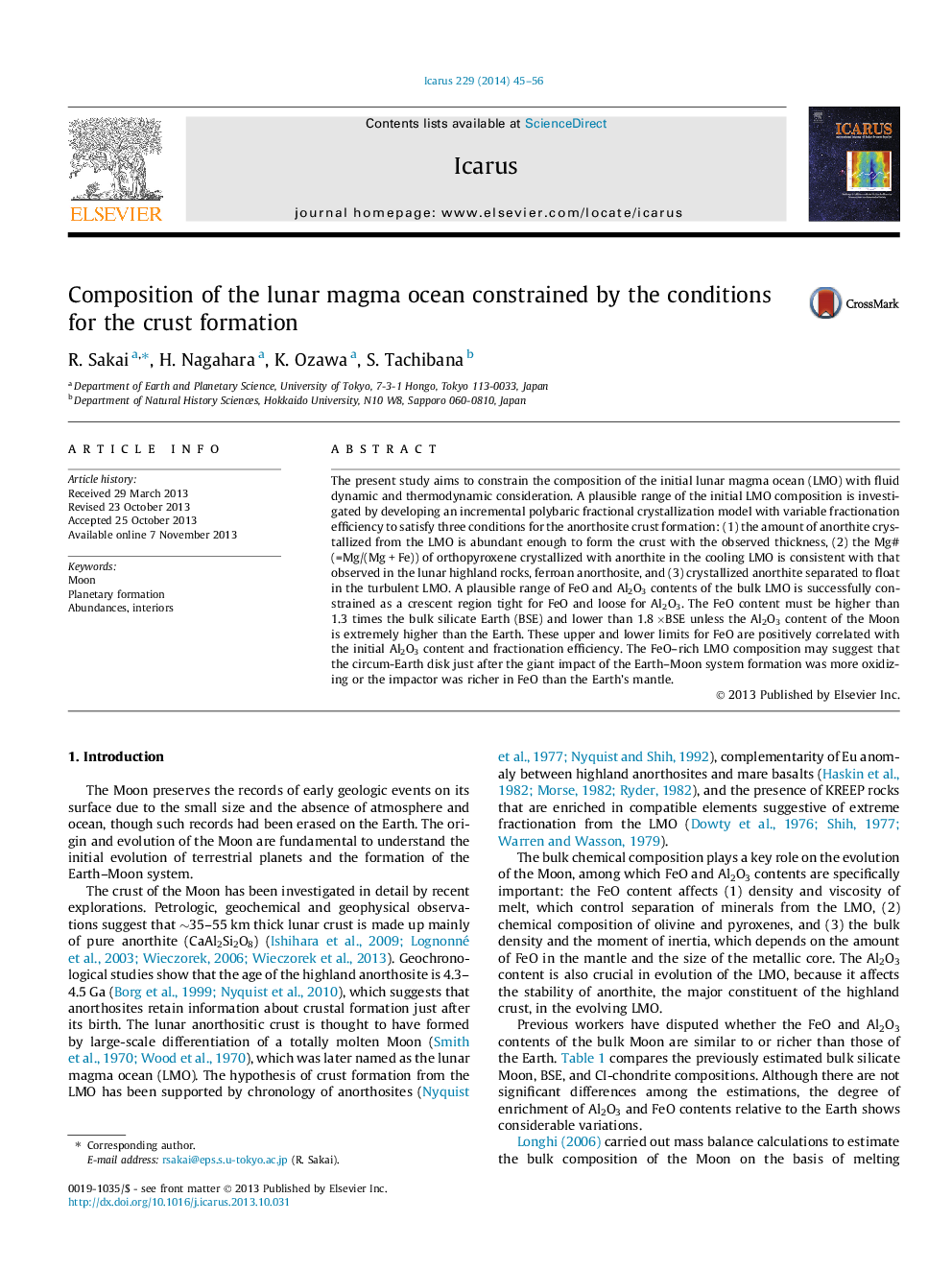| Article ID | Journal | Published Year | Pages | File Type |
|---|---|---|---|---|
| 8138769 | Icarus | 2014 | 12 Pages |
Abstract
The present study aims to constrain the composition of the initial lunar magma ocean (LMO) with fluid dynamic and thermodynamic consideration. A plausible range of the initial LMO composition is investigated by developing an incremental polybaric fractional crystallization model with variable fractionation efficiency to satisfy three conditions for the anorthosite crust formation: (1) the amount of anorthite crystallized from the LMO is abundant enough to form the crust with the observed thickness, (2) the Mg# (=Mg/(Mg + Fe)) of orthopyroxene crystallized with anorthite in the cooling LMO is consistent with that observed in the lunar highland rocks, ferroan anorthosite, and (3) crystallized anorthite separated to float in the turbulent LMO. A plausible range of FeO and Al2O3 contents of the bulk LMO is successfully constrained as a crescent region tight for FeO and loose for Al2O3. The FeO content must be higher than 1.3 times the bulk silicate Earth (BSE) and lower than 1.8 ÃBSE unless the Al2O3 content of the Moon is extremely higher than the Earth. These upper and lower limits for FeO are positively correlated with the initial Al2O3 content and fractionation efficiency. The FeO-rich LMO composition may suggest that the circum-Earth disk just after the giant impact of the Earth-Moon system formation was more oxidizing or the impactor was richer in FeO than the Earth's mantle.
Related Topics
Physical Sciences and Engineering
Earth and Planetary Sciences
Space and Planetary Science
Authors
R. Sakai, H. Nagahara, K. Ozawa, S. Tachibana,
